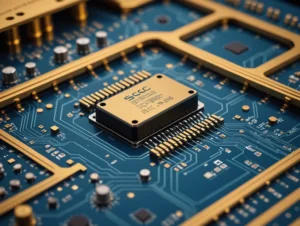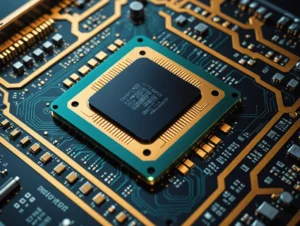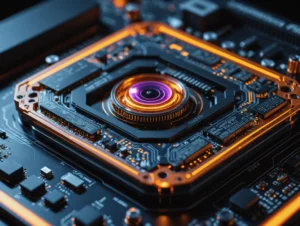In optical communication systems, light-emitting diodes (LEDs) are widely used as light sources due to their efficiency, reliability, and adaptability. The following provides a detailed overview of LED types, structures, working principles, and operational characteristics for optical communication systems.
1. Introduction to LED Light Sources
LEDs are crucial for optical communication systems. They act as the main light sources to convert electrical signals into optical signals, which are then transmitted through optical fibers. To meet the stringent requirements of optical communication, LEDs need to have the following features:
-
- Compatibility with low-loss wavelengths of optical fibers (e.g., 0.85 µm, 1.33 µm, or 1.55 µm).
-
- High coupling efficiency between the LED and the optical fiber.
-
- Stable emission over long durations for reliable operation.
-
- Support for both direct modulation for intensity modulation (IM) and high-speed transmission.
2. Types of LEDs Used in Optical Communication
LEDs in optical communication can be categorized into Surface-Emitting LEDs (SLEDs) and Edge-Emitting LEDs (ELEDs) based on their structure and light emission mechanism.
2.1 Surface-Emitting LED (SLED)
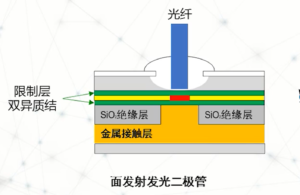
-
- Structure: The emission surface of SLEDs is limited to a small area matching the size of the optical fiber. The base typically includes a SiO₂ layer for reflection and a confinement layer to guide the emitted light.
-
- Features: SLEDs have higher coupling efficiency and controlled emission patterns, making them suitable for shorter-distance communication.
2.2 Edge-Emitting LED (ELED)
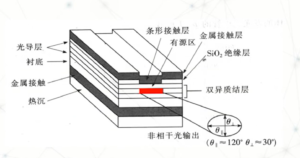
-
- Structure: ELEDs feature a stripe-like configuration resembling semiconductor laser diodes. The back surface includes reflective layers for light confinement, while the front surface directs the emitted light.
-
- Features: ELEDs exhibit better performance for longer transmission distances due to their improved directional emission and higher power output.
3. Working Principle of LEDs
The emission of light in LEDs is based on the PN junction principle:
- Electron Injection: When forward voltage is applied, electrons from the N-region recombine with holes in the P-region, releasing energy as photons (light emission).
- Efficiency: The emission efficiency is determined by the recombination of electrons and holes. Proper design ensures high light extraction and minimal energy loss.
4. Operational Characteristics of LEDs
4.1 Spectral Characteristics
-
- LEDs emit light over a broader spectrum compared to laser diodes, which limits their suitability for long-distance communication due to dispersion effects.
-
- Common materials:
-
- GaAs LEDs emit wavelengths around 0.8 µm.
-
- InGaAsP LEDs emit wavelengths between 1.3 µm and 1.5 µm.
-
- Common materials:
4.2 P-I Characteristics (Power-Current Relationship)
-
- LED output power increases linearly with current at lower drive currents but may saturate or decline at higher currents.
-
- Temperature significantly impacts the efficiency, with higher temperatures leading to reduced output power.
4.3 Modulation Characteristics
-
- LEDs support direct modulation for varying the drive current, making them compatible with intensity modulation schemes.
-
- However, nonlinearity in the P-I curve can introduce signal distortion.
4.4 Temperature Dependence
-
- LED performance is temperature-sensitive. Higher temperatures reduce efficiency and increase energy loss, highlighting the need for proper thermal management in practical applications.
5. Applications in Optical Communication
Due to their versatility and reliability, LEDs are extensively used in applications such as:
-
- Short-distance data transmission.
-
- Passive optical networks (PON).
-
- Optical fiber communication in industrial and consumer electronics.
Summary
LEDs are indispensable in optical communication systems, offering a balance between cost-effectiveness and performance. While their broader emission spectrum limits their use in long-distance transmission, their stability, reliability, and adaptability make them ideal for short to medium-range optical networks. Surface-emitting and edge-emitting LEDs provide tailored solutions for specific transmission requirements, ensuring efficient coupling and high-speed communication.

